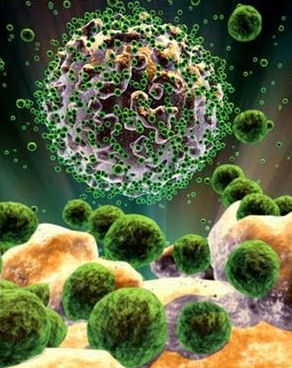 HIV superinfection (infection with multiple strains of the virus) may be as common as initial HIV infection and is not limited to high risk-populations, according to a surprising new study in the Journal of Infectious Diseases.
HIV superinfection (infection with multiple strains of the virus) may be as common as initial HIV infection and is not limited to high risk-populations, according to a surprising new study in the Journal of Infectious Diseases. Superinfection can have detrimental clinical effects, such as accelerating disease progression and increasing drug resistance - even among individuals who were previously controlling their HIV infection.
Led by researchers at the Johns Hopkins Bloomberg School of Public Health, the study examined the rate of superinfection among a community of sub-Saharan Africans.
"For years there has been great debate regarding the rate of HIV superinfection among populations, and previous studies have focused on individuals exposed to the virus through high-risk sexual activity or intravenous drug use," said Andrew Redd, the study's lead author. "We were looking to determine the rate of HIV superinfection among a broader, general population."
The researchers found the rate of superinfection was 1.44 per 100 persons and consisted of both intersubtype and intrasubtype superinfections, comparable to primary HIV incidence in initially HIV-negative individuals in the general population.
"We found it remarkable that the rates of superinfection and underlying new HIV infections were equivalent. This raises many interesting questions about the natural immune response and its inability to generate resistance to HIV reinfection," said study co-author Thomas Quinn.
The findings have significant implications for estimations of the age of the HIV epidemic and for phylogenetic modeling of viral evolution because many of these models assume that superinfection is not occurring. Additionally, the results suggest that the immune response elicited by primary infection confers limited protection and raises concerns that vaccine strategies designed to replicate the natural anti-HIV immune response may have limited effectiveness.
"Our findings suggest that HIV vaccine strategies designed to recreate the natural immune response to HIV may be insufficient to protect an individual from infection. However, the data also provide an interesting new population to explore since it is possible that some individuals will be protected from superinfection. Determining what controls this could lead to new avenues for vaccine research," Redd concluded.
Related:
Discuss this article in our forum
AIDS A Sign Of Masculinity For Some African Men
HIV Subtype A Better Indicator Of AIDS Mortality
Mass Circumcisions In Africa "Could Prevent Millions Of AIDS Deaths"
Thai HIV Subtype The Deadliest
Source: Johns Hopkins University Bloomberg School of Public Health

